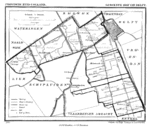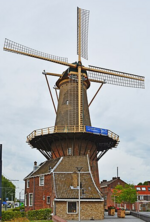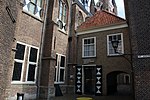St Stanislas College, Delft
1948 establishments in the NetherlandsAll pages needing cleanupBuildings and structures in DelftEducational institutions established in 1948Jesuit secondary schools in the Netherlands ... and 1 more
Schools in South Holland

St Stanislas College (Dutch: Stanislascollege) is a conglomerate of private Catholic secondary schools located in Delft, Pijnacker, and Rijswijk, in the province of South Holland, in the Netherlands. Saint Stanislas College itself was founded in Delft as a Gymnasium in 1948 by the Society of Jesus. When other surrounding schools needed to work together to secure funding they joined to form a conglomerate. In 2007, there were 4,253 students. It is the third largest school in Delft, after the Christian Lyceum Delft and Grotius College. The College is part of the international network of Jesuit schools.
Excerpt from the Wikipedia article St Stanislas College, Delft (License: CC BY-SA 3.0, Authors, Images).St Stanislas College, Delft
Westlandseweg, Delft
Geographical coordinates (GPS) Address Nearby Places Show on map
Geographical coordinates (GPS)
| Latitude | Longitude |
|---|---|
| N 52.008575 ° | E 4.345414 ° |
Address
Voordijkshoornse polder
Westlandseweg
2614 RZ Delft
South Holland, Netherlands
Open on Google Maps











